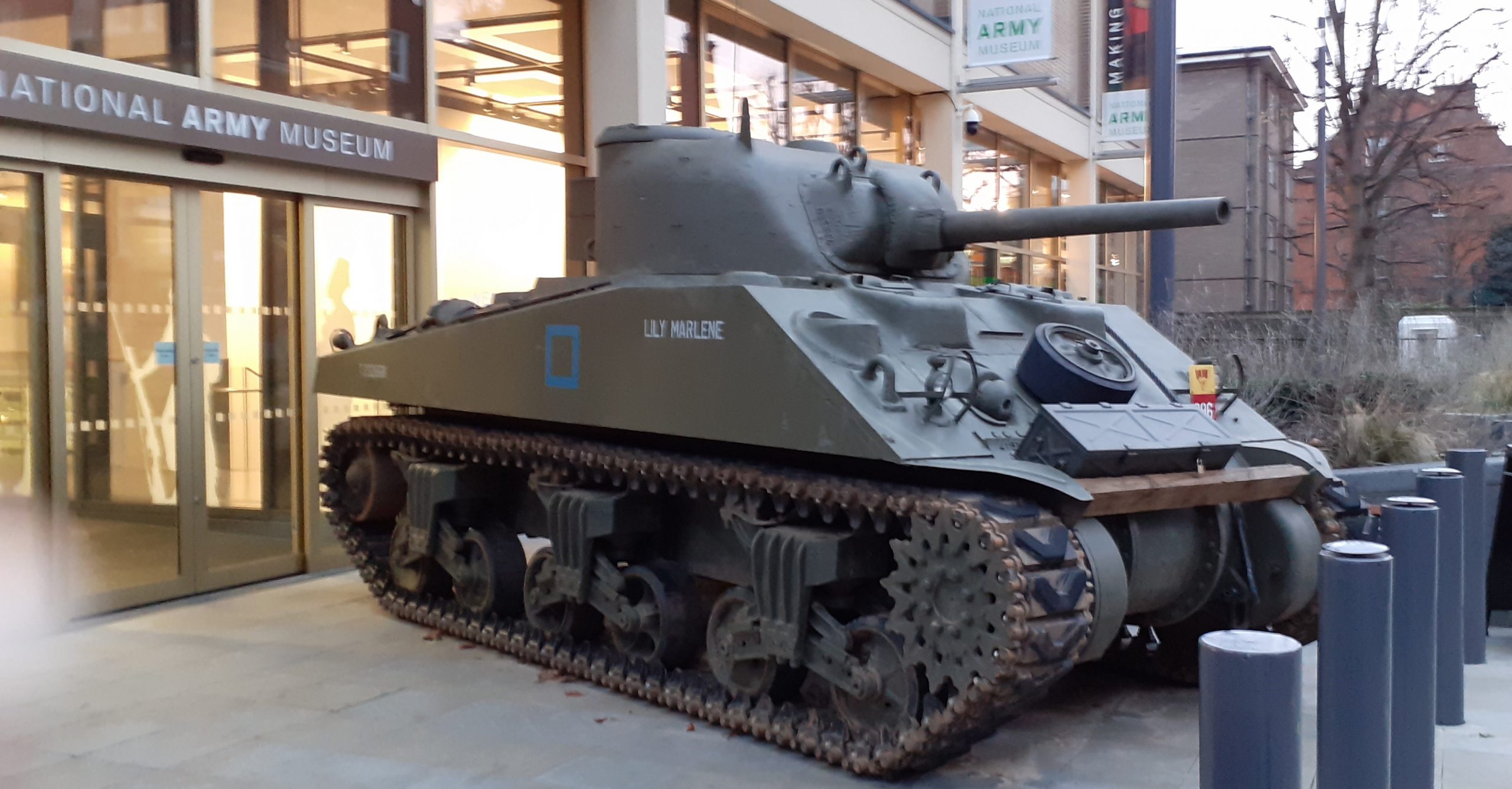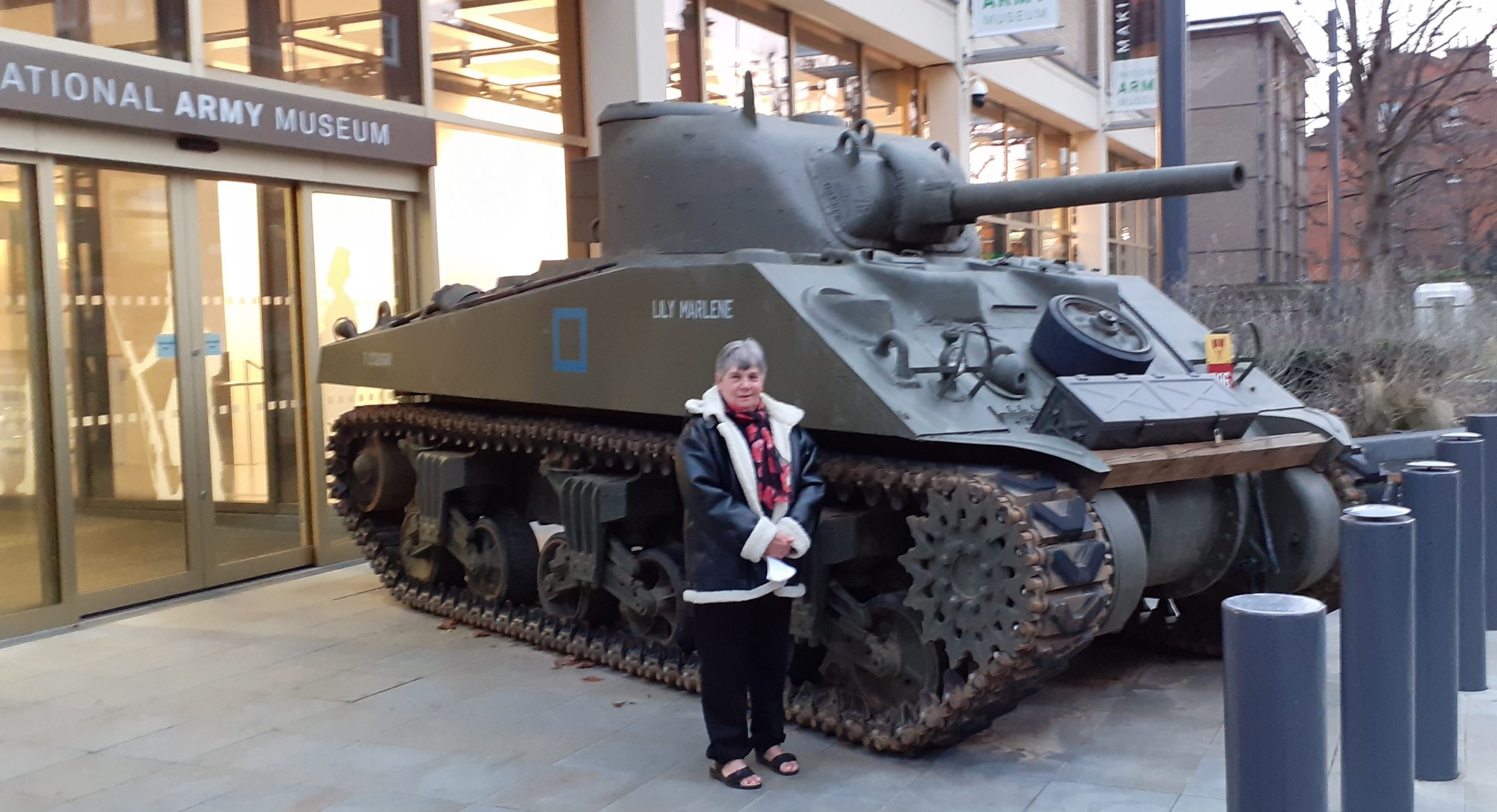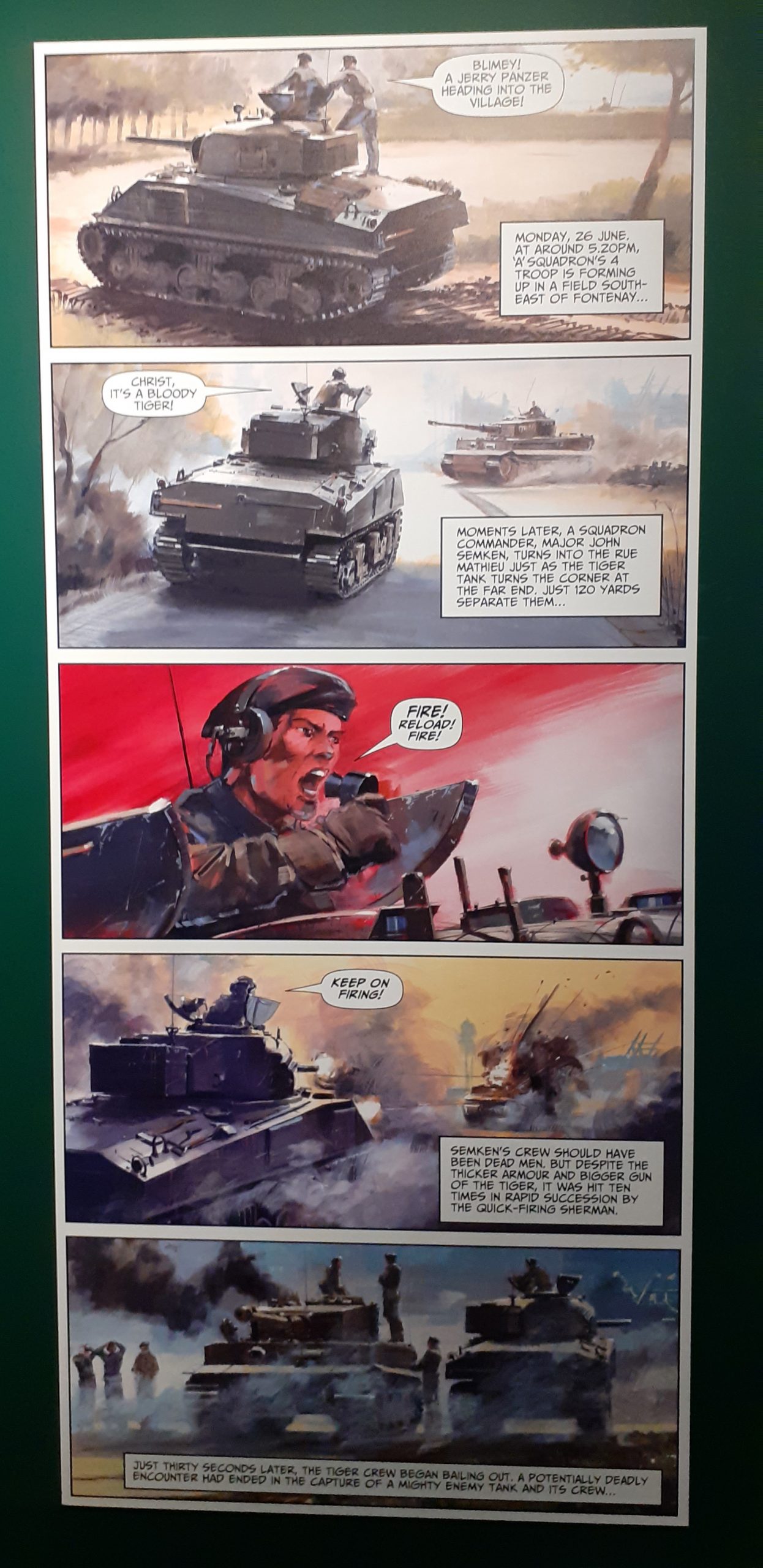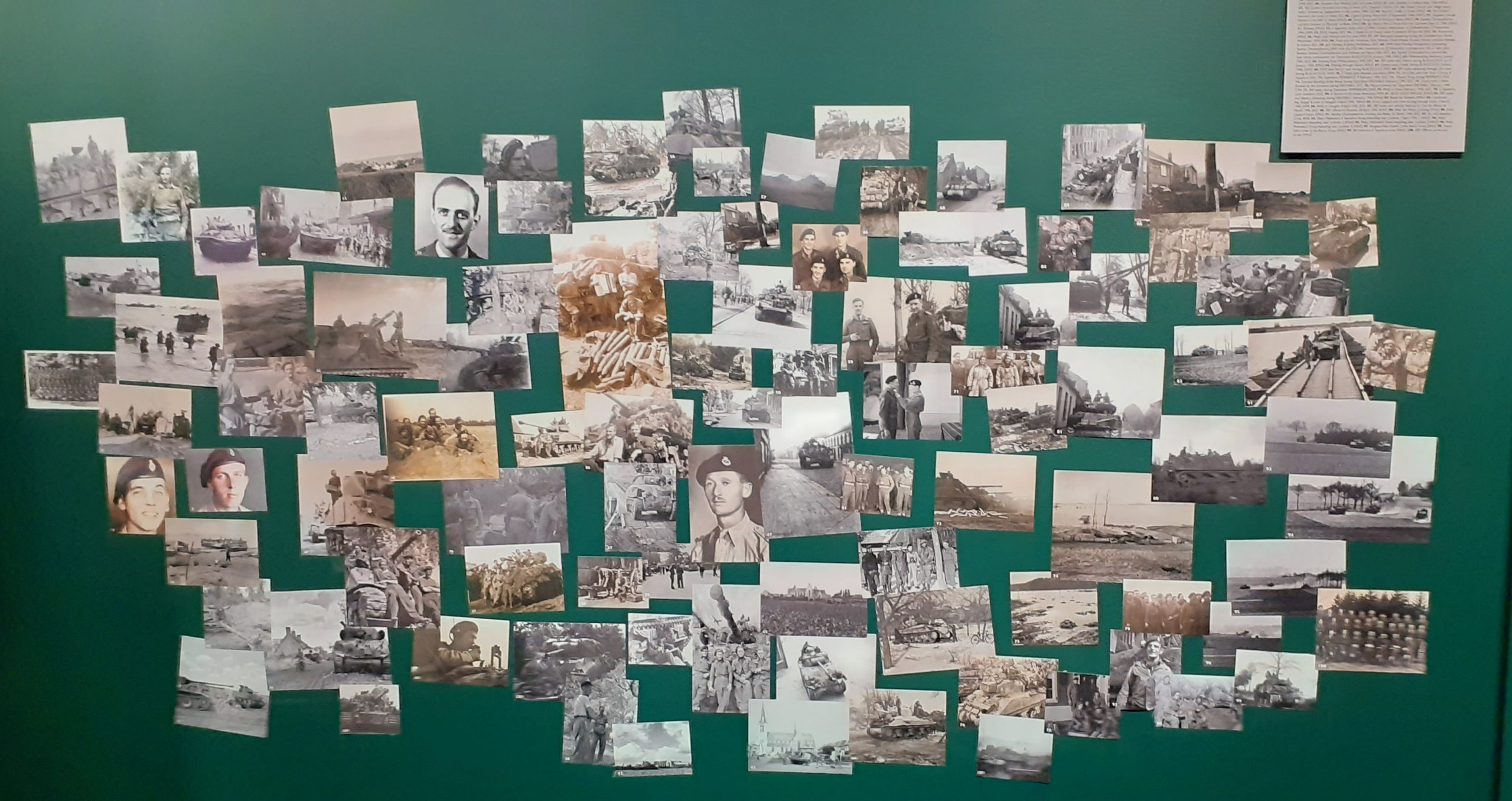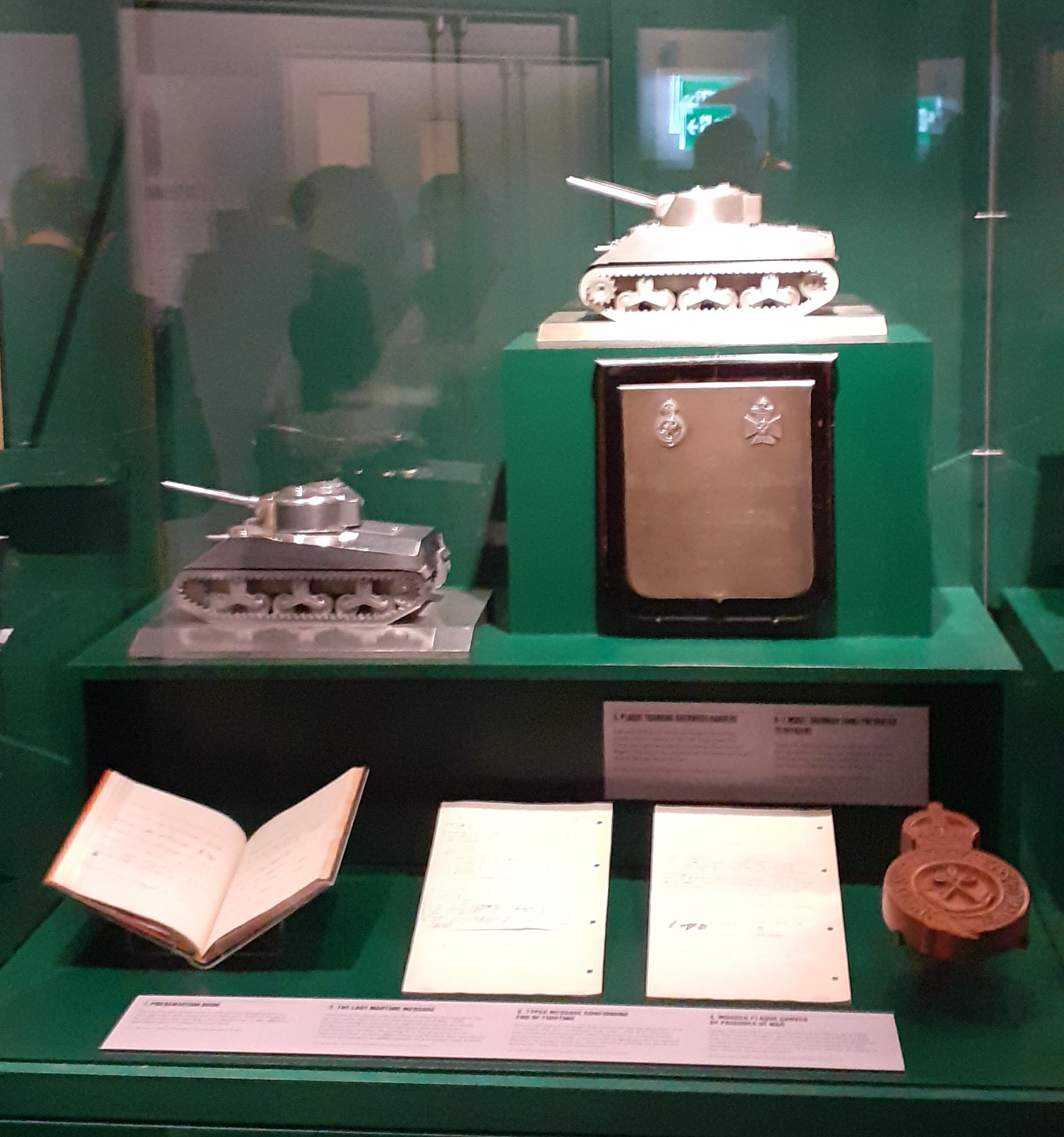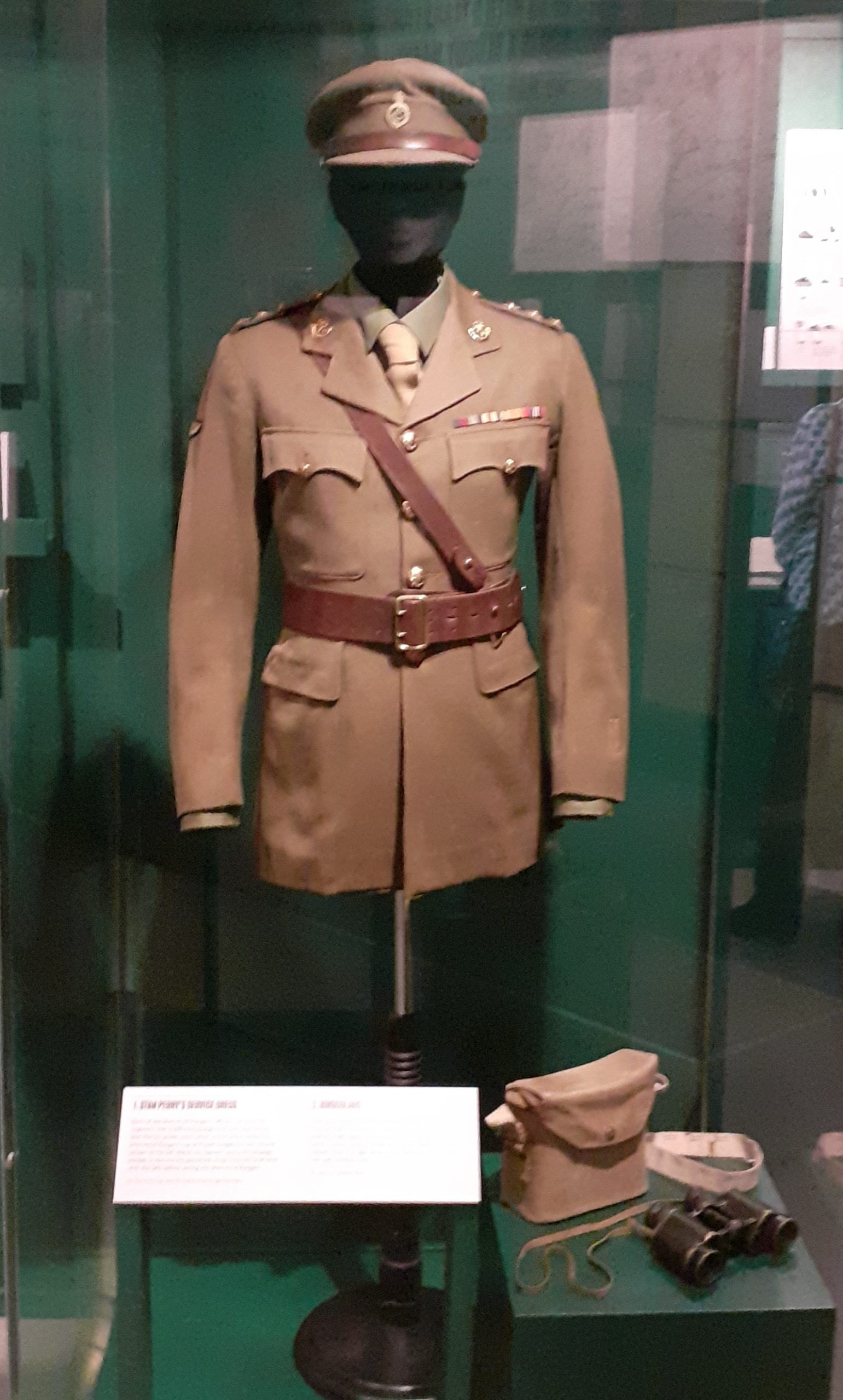The Sherwood Rangers Yeomanry
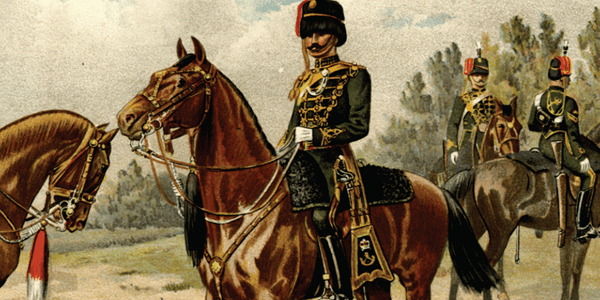
From the Saddle to Armour
Raised as the Nottinghamshire Yeomanry in 1794, the Regiment deployed on several occasions in the 19th Century to maintain law and order in the local area.
Since 1900 The Sherwood Rangers have served overseas in the Boer War and both World Wars. In 1967 the Regiment was downsized from a full Regiment to a Squadron of the Royal Yeomanry becoming B Squadron, equipped with armoured cars. In 1992 the Squadron was transferred to the Queen’s Own Yeomanry as part of NATO’s Rapid Reaction Corps. It was re-designated again in 1999 as S Squadron of the Royal Yeomanry, trained to crew Challenger 2, and later as a CBRNR (Chemical, Biological, Radiological and Nuclear) Reconnaissance Regiment. It deployed to Iraq in 2004 in armoured reconnaissance vehicles. Soldiers from the Regiment have also served in Bosnia, Kosovo and Afghanistan. In 2015, due to their seniority, the Squadron was redesignated as A (Sherwood Rangers) Squadron, The Royal Yeomanry.
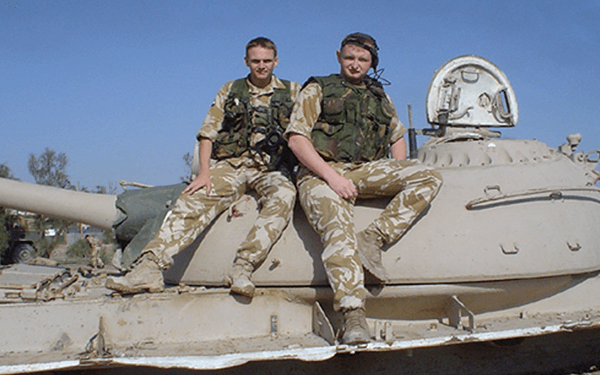

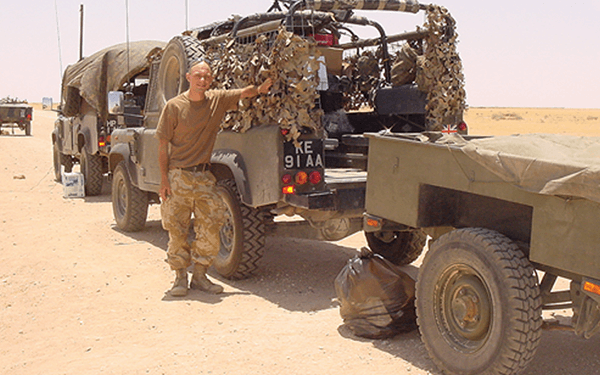
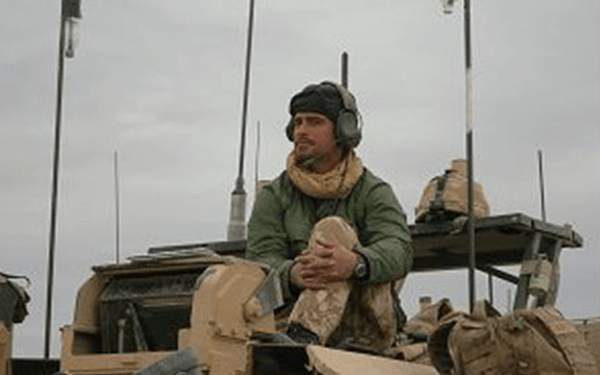
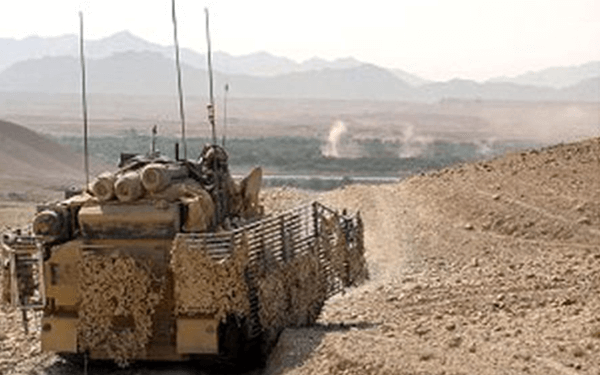
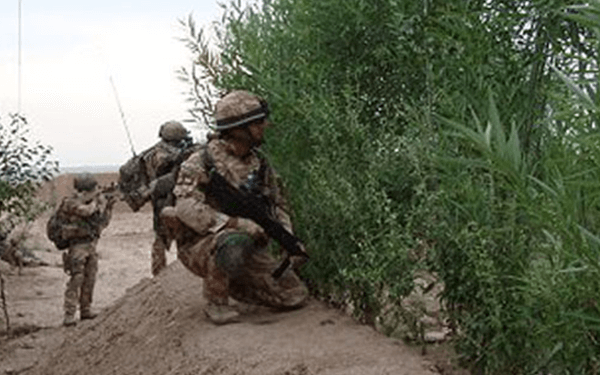
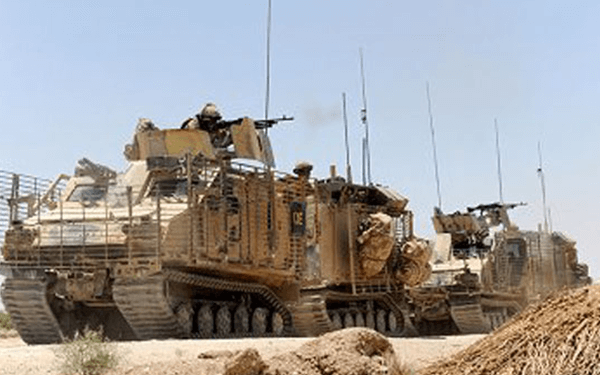
Origins
The Regiment was raised in 1794 as volunteer troops in response to a call from William Pitt. Troops of cavalry were raised throughout the county of Nottinghamshire with the Regiment being known as The Nottinghamshire Yeomanry.
Raised initially to counter the threat of the Republican movement in France which resulted in the French Revolution and later to maintain Law and Order in the County. They were called out to maintain peace during the various riots which took part during this period.
In 1826 the Regiment was divided in two, becoming The South Nottinghamshire Hussars and The Sherwood Rangers Yeomanry. The Sherwood Rangers having troops based at Newark, Clumber, Mansfield, Worksop and Retford. The name originally being used by an infantry unit raised by Thomas Woollaston White of Wallingwells who was also a founder member of the Mansfield troop. Uniquely the unit was funded entirely at his own expense, King George III offered to share the cost and when this was declined, White was then honoured with a baronetcy.
With the formation of a Police Force nationally the role of the Yeomanry ceased to be an aid of the civil power and for the remainder of the century they were trained as cavalry as part of the country’s general volunteer reserve which was a forerunner of the Territorial Army.
The Boer War
When the Boers declared war in South Africa the regular army found they were involved in a new type of warfare. The parade ground training was useless against the Boer Commandos who used guerrilla tactics and accurate shooting with smokeless cartridges that caused heavy casualties. This caused a series of severe reverses for the army before reinforcements arrived. A request went out for the possibility of raising 8,000 irregulars in England to be equipped as mounted infantry who are able to shoot and ride well.
The Yeomanry responded , soon several regiments were raised and equipped, the Nottinghamshire Yeomanry raised 2 of the 4 squadrons of the 3rd Imperial Yeomanry, the other 2 being the Yorkshire Dragoons and Yorkshire Hussars. They sailed on 27th January and were the first Yeomanry to arrive on 12th March in Kimberley. By April they were in action ,their main job to capture the guerrilla commandos, while never wholly successful the 3rd Regiment was involved in several skirmishes and three sharp actions. Both Nottinghamshire Squadrons usually worked side by side, won praise for their skill, determination and dash. In May 1901 the first contingent returned home, a second contingent taking their place, by then the war was coming to an end.
Both Regiments were awarded the Battle Honour “South Africa 1900-1902”, between them they were awarded 3 DSOs, 6 DCMs and several mentioned in despatches. 42 lost their lives. This was the first time the Yeomanry had been on active service.
The First World War
By 1914, the Regiment was stilled roled as cavalry and was now part of the Territorial Army constituted in 1908 by the reorganisation introduced by Haldane, the Secretary of State for War as a result of the lessons learned from the Boer War. The Regiment was mobilised and after a period of training it was sent to Egypt. In 1915 it was ordered to Gallipoli where it served dismounted for three months in the infantry role as part of the 2nd Mounted Cavalry Division. It was awarded a Kings Colour in recognition of its gallantry in the Infantry role. It returned to Egypt, remounted, then despatched to serve in Macedonia.
Returning once more to Egypt it was redeployed to Palestine where it took part in Allenby’s cavalry advance against the Turks from Gaza to Jerusalem. Finally taking a prominent part in Allenby’s annihilation of the 105,000 strong Turkish Army in the Autumn of 1918, which was achieved despite being outnumbered, the cavalry advanced at speed, in numbers to outflank and bypass the Turks positions. The 5th Cavalry Division advanced 540 miles in 36 days from Jerusalem to Aleppo forcing the Turks into a wholesale retreat. Allenby’s troops taking 80,000 prisoners with very little fighting it is regarded as one of the finest actions by cavalry in the history of warfare and was also one of the last.
The Sherwood Rangers Today
The Sherwood Rangers Yeomanry is now part of the Army Reserves, named A (SRY) Squadron The Royal Yeomanry and based in Carlton, Nottingham. In recent years members of the Regiment have served in Iraq and Afghanistan.
Origins In Nottingham
The Nottingham Troop was raised by Captain Ichabod Wright in 1794.
Leading The Way
In the Second World War the Regiment led the tank attacks in the battle of El Alamein.
D Day
Landing on Gold Beach on D Day, in the battle for Normandy, the Regiment was in action for fifty out of sixty days, losing more than fifty tanks.
Sherwood Rangers Association
Website and online shop click here
Sherwoodrangers.org.uk
The Second World War
The inter war years saw the Regiment still equipped as horsed cavalry, but facing a gradual reduction of resources available for defence, until realisation of the threat posed by Hitler at last dawned late in the 1930’s. In 1939, the Regiment was mobilised and posted to Palestine as part of the 1st Cavalry Division where it carried out internal security tasks and whilst doing so ‘A’ Squadron charged down the main street of Haifa . In July 1940, it lost its horses on conversion to coastal artillery, and, in this role, it took part in the famous and successful first Siege of Tobruk and in the battle for Crete.
Converted in 1941 to an armoured regiment and now under command of the charismatic Lieutenant Colonel Edward “Flash” Kellett DSO M P, it formed part of the 10th Armoured Division effectively the formation which had been previously the 1st Cavalry Division and therefore predominantly consisting of former Yeomanry and Cavalry regiments and saw action for the first time in tanks in the defensive battle of Alam el Halfa. On the 24th October, 1942, it headed the armoured attacks in the battle of El Alamein. Rommel later stated that the Sherwood Rangers were the only unit to breach his defences in the first 24 hours of the battle. They then played an important part in Operation Supercharge, the final breakout battle, which clinched the victory. As had been anticipated by Montgomery 10th Armoured Division had been sacrificed to the victory and to preserve the battle hardened 7th Armoured Division as his key reserve.
What remained was reformed into 8th Armoured Brigade, an independent armoured brigade and the Regiment was rewarded for the fierceness with which it had fought by being selected as one of the three armoured regiments to be preserved. The role of the Brigade remained the same namely to punch the initial holes in any enemy defensive stop line through which 7th Armoured Division could then be passed. The Brigade proved very good at its task and as a result the Regiment played a leading part in the long advance to Tunis, notably the attack on and fall of Tripoli and in outflanking the Mareth Line at the bitterly fought battle of Tebaga Gap. The price was paid in heavy casualties.
By the time that victory in North Africa had been finally secured with the fall of Tunis the Regiment had gained such a reputation for their ability to spearhead attacks that they were specially brought back to England to become one of four armoured regiments tasked to lead the assault landings on the two British Beaches on D Day in amphibious DD (duplex drive) tanks, a very hazardous task. After four months training to bring them up to the standard of the other three regiments that had been practicing for over a year they were the first Yeomanry Regiment to land in France on D-Day, swimming ashore on Gold Beach two minutes before H hour, Eight of their tanks foundered in the rough seas on the way in. They took part in the liberation of Bayeux the next day, the first town to fall to to the Allies and were in the thick of the tank fighting around Caen.
They were still part of 8th Armoured Brigade, but its role had changed from acting as a spearhead for the armoured divisions as they had in North Africa to supporting the infantry divisions, when they were ordered to carry out an attack since such divisions had little or no integral armour of their own. The word “support” was an euphemism because, due to the extreme vulnerability of infantry in this environment, the Regiment was always ordered by the Divisional commander to lead the attack. They learned to maximise their ability to get forward in the country of NW Europe, which was no less difficult for tanks, by a process of fire and movement in which they made sure the fire from their guns was weighty, accurate and directed at every possible enemy ambush location. The price was that exhausted tank crews had to spend a significant part of each short summer night painstakingly bombing up tanks empty of ammunition. So successful did they become that infantry formations learned to ask for them by name. Such a reputation was won at a great price as is illustrated by the fact that in the battle for Normandy alone they were in action for 50 of the 60 days that it took to win, losing 50 tank commanders and many more tanks in the process.
Following the break out, the Regiment played a relatively lesser role in the operation by the Allies to overcome further determined resistance and secure
crossings over the Seine.
The Regiment, temporally unshackled from their supporting role and back as pure armour, was part of the rapid advance which followed across Northern France, covering 140 miles in three days, one of the fastest rates of advance by armour in history. An euphoric advance which was brought to a sudden halt by the renewed and fanatical resistance by the enemy in Belgium and Holland, particularly at Geel where the Sherwood Rangers played a major role in the fighting to secure the start line for Operation Market Garden, the failed attempt by airborne forces to seize crossings over the Rhine. The Regiment having suffered heavy casualties at Geel played a relatively minor role in Market Garden itself. However whilst supporting 82nd US Airborne Division, its Reconnaissance Troop became the first British unit to enter Germany. After taking part in more fighting around the Rhine, particularly when breaching the Siegfried Line at Geilenkirchen, the Regiment took part in the final breakthrough into Germany and, having ended the war beyond Bremen, was temporarily disembodied on the 1st March 1946.
By the end of the campaign the Regiment had supported every British infantry division in theatre and, in addition three US infantry divisions, Another telling statistic was that 8th Armoured Brigade, a formation with an establishment of approximately 200 tanks, had received over 1000 replacements from the armoured delivery regiments during the campaign. In the light of the foregoing it is understandable that General Sir Brian Horrocks who had the Regiment under his command from August 1942 to May 1945 wrote on the occasion of the Regiment being disembodied “I can hardly imagine a British Army without the Sherwood Rangers and there is no doubt no armoured regiment can show a finer record of hard fighting”. He later added, “I still maintain that the Sherwood Rangers Yeomanry took part in more fighting than did any other armoured regiment during this period.”
Its success in the Second World War can be gauged by its 30 battle honours, its 159 awards including 78 for gallantry, and above all, the valour of the men, remembering particularly the 827 casualties killed, wounded and missing.
The Cold War
In 1947, the Regiment was re-formed in Nottinghamshire as an armoured regiment, equipped with Comet Tanks with Squadrons at, Carlton, in Nottingham, Retford, Worksop and Mansfield and with the Regimental Headquarters at Newark. It continued in this role until 1961 when it was briefly converted into a reconnaissance regiment before being reconverted once again into an armoured regiment equipped with Centurion Tanks. The role was that of a general reserve.
In 1967, there was a defence review designed to reduce the size of the TA but increase its operational effectiveness to counter the end of National Service and the perceived escalation of the Cold War, The Sherwood Rangers Yeomanry was reduced from a Regiment to a Squadron, based at Carlton in Nottingham, one of only four Yeomanry Regiments at that time to retain a role in armour, and for 25 years thereafter was a sabre squadron in The Royal Yeomanry, then a NATO assigned armoured reconnaissance regiment recruited and equipped on war establishment scales, with 130 armoured cars and 100 other vehicles manned by 750 yeomen and 100 regular and civilian permanent staff capable of providing most training and logistic support required to train and prepare the regiment for war in the Training Centres. The main AFV initially was Saladin and later Fox. The Squadron’s own establishment was 150 all ranks supported by 16 Permanent Staff manning 30 AFV’s and 15 other vehicles. Never before or since have the Sherwood Rangers been so well resourced and supported in peacetime.
The RY formed part of the 1 (BR) Corps, tasked as part of NATO, with the defence of the West against the threat at that time posed by the Soviet Union. The role required the unit to train in BAOR and the UK in alternate years and to be capable of mobilising to reinforce 1 (BR) Corps on less than a weeks notice.
Its primary role was Rear Area Security which involved, with others, protection of the massive logistic assets of the Corps when deployed in the field from the threat of sabotage by dissidents and attack by Soviet Special Forces. It took part with distinction in all the major rehearsals, including Ex Crusader 80 – where its tactics were recorded with favour in the Corps post Exercise report, Lionheart 84 and Ex Spear Point, all Corps level exercises, and the Ex Keystone series, which were at Divisional level. Over twenty years of dedicated commitment by the Sherwood Rangers was rewarded and acknowledged in 1989 when on an exercise in BAOR designed to test the subunits of the two Regular and two TA armoured reconnaissance regiments assigned to the 1 (BR) Corps, the Squadron was assessed as the best of the 16 sabre squadrons tested. Some even say that it was this very result, when communicated to the Kremlin, which finally precipitated the end of the Cold War!
Afghanistan
The RY and by definition S (SRY) Sqn had individuals deployed in Afghanistan for a number of years doing a variety of interesting and not always conventional ‘armoured soldier’ roles.
One of the strengths of the Army Reserves is that skills and qualifications gained as a civilian can be utilised within a military environment and this was superbly illustrated when the regiment deployed an S (SRY) Squadron officer as a counter-narcotics and agricultural advisor providing advice and direction at a political level on opium production, poppy eradication and subsequent crop harvesting.
Other combat roles in Afghanistan have seen deployments as ‘ground holding’ troops in the traditional infantry sense providing security, counter-intimidation and ground domination patrols and also the more specialised Forward Air Controller (FAG) co-ordinating air support to combat troops. Both of these tasks require individuals that are tough, resilient and capable; often working under austere conditions in close proximity to the enemy.
A change of operational direction occurred in 2009 when the regiment deployed a Troop Leader from the Sherwood Rangers Squadron to form the inaugural ISTAR Base Surveillance Troop. Its responsibility was to provide protection to camps and patrol bases from enemy attack by using all weather day/night cameras, ground scanning radar and deployable sensor suites.
Other more traditional roles have seen Yeomen providing invaluable support to all the RAC regiments as vehicle crewmen on the familiar CVR/T platform but also the latest range of Army combat vehicles such as Viking, Warthog, Jackal, Mastiff and Ridgeback. Tasks include narcotics interdiction and maintaining an overt security presence on and in depth of various main routes in order to maintain freedom of movement whilst disrupting insurgent’s activity on the fringes of the protected communities.
The Present
Due to the success of the RY’s deployment and the lessons learned from it, with effect from 2005 the Royal Yeomanry, including the Sherwood Rangers has now undergone a further change of role so that the whole unit has become a CBRN Warfare Reconnaissance Regiment As well as carrying out CBRN training. the Regiment practises crew skills in navigation, tactical movement and communication using Land Rover scout cars. A lot of training time is spent on dismounted infantry work as well. The Royal Yeomanry also develops leadership skills and an adventurous spirit by conducting a wide variety of expeditions and sports. Under the new Army structure. the role of the Royal Yeomanry is to support the Formation Reconnaissance Regiments and the Joint CBRN Regiment on operations by providing skilled CBRN recce soldiers. In addition it augments the affiliated regiments by performing specialised roles such as forward air controller. The specialist role means that as well as supporting the regular Army abroad, the Regiment has a vital part to play as part of a response to terrorist attack or emergency within the United Kingdom. At no time since the Second World War has the Royal Yeomanry played such an important part in protecting Britain’s security. Its place at the heart of this effort provides a rewarding and challenging experience for every member of the Regiment.
The Sherwood Rangers Squadron is now believed to be the only element of the Territorial Army with unbroken service in armour. All of its members are civilian volunteers who (save for periods of mobilisation during the Boer War, both World Wars and more recently in Iraq) undertake one continuous period of 15 days’ training and about 20 other days at weekends each year. The Squadron is currently based in its Training Centre in Carlton, Nottingham.
Brothers In Arms: A Legendary Tank Regiment’s Bloody War From D-Day To VE-Day
The National Army Museum in London are currently holding an exhibition to celebrate the publishing of a major new book about The Sherwood Rangers Yeomanry by the author and historian James Holland – Brothers In Arms: A Legendary Tank Regiment’s Bloody War From D-Day To VE-Day.
This exhibition focuses on just eight of those remarkable men. Together, they represent a cross-section of the personalities that made the Sherwood Rangers such a celebrated and successful armoured regiment.
The exhibition runs at the NAM until 6 May 2022, and we are hoping to then move it to Thoresby Courtyard, the home of the Museum.
Here are some photographs taken on the opening day at the NAM by Mr Steve Cox, one of our volunteers, and curator of the Sherwood Rangers Collection.
